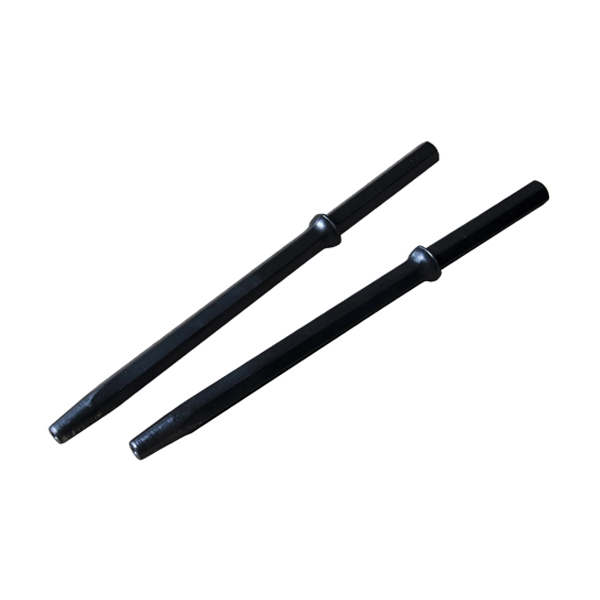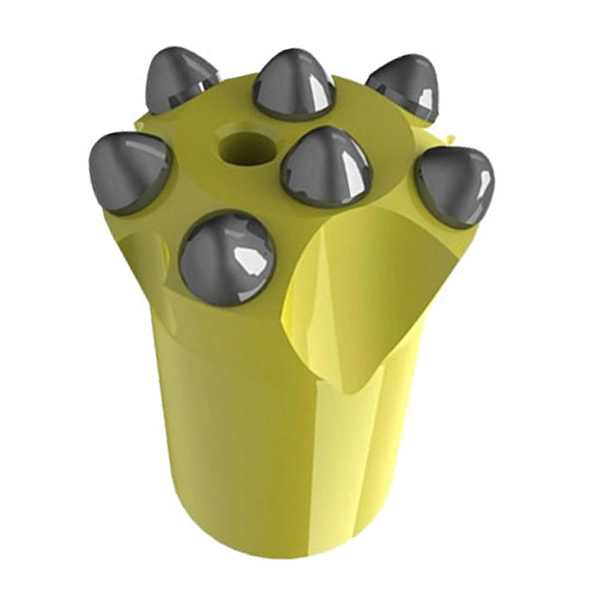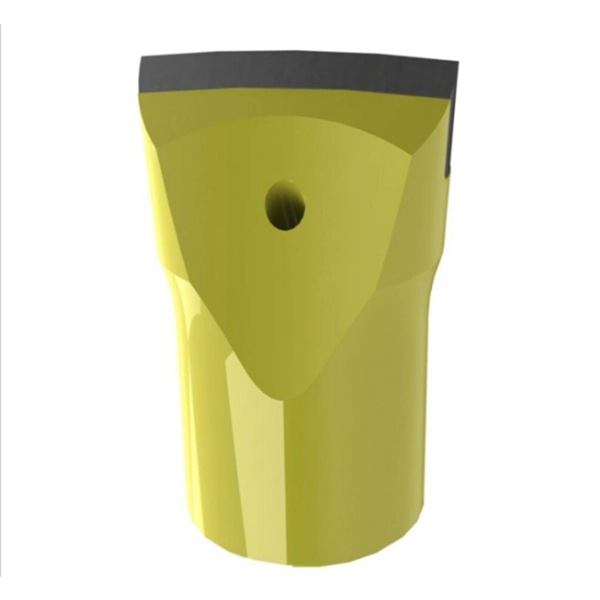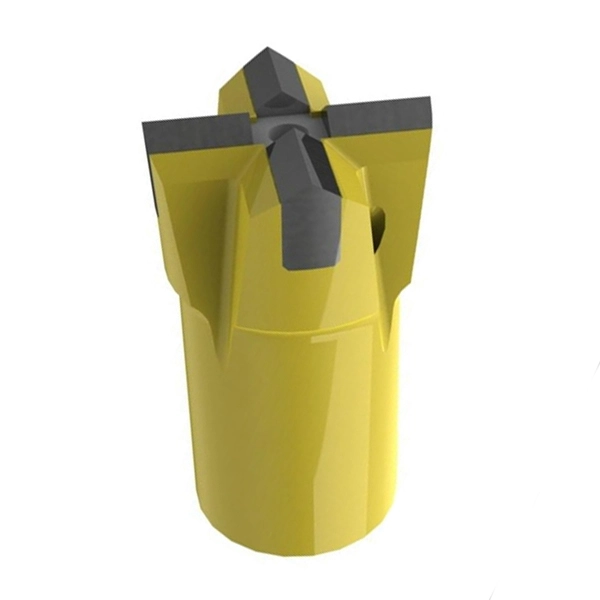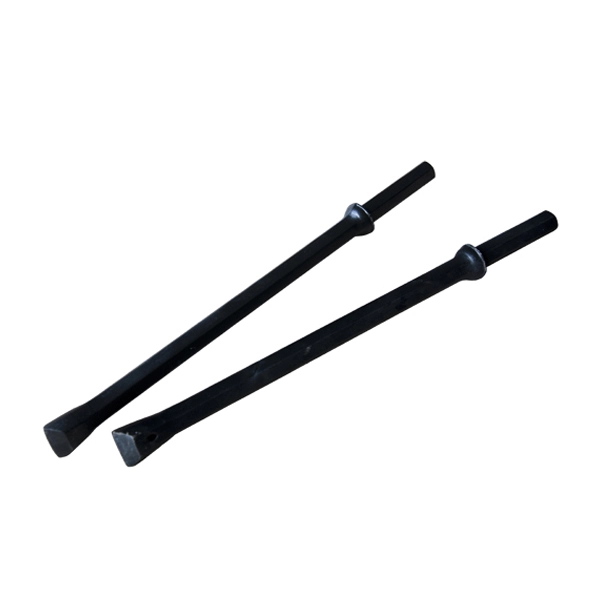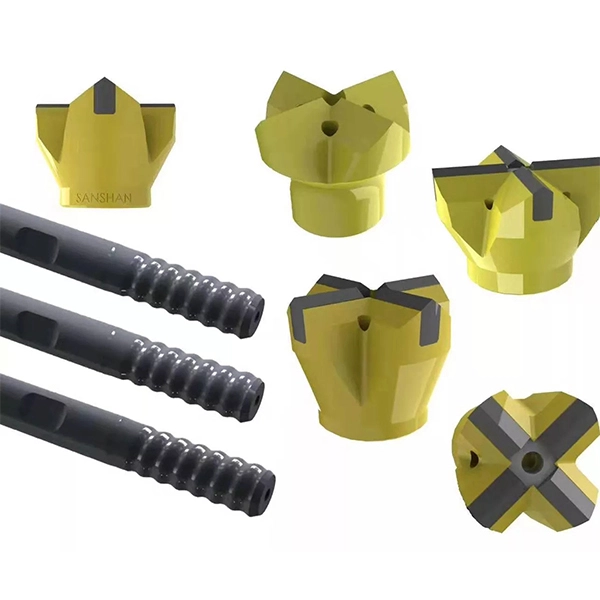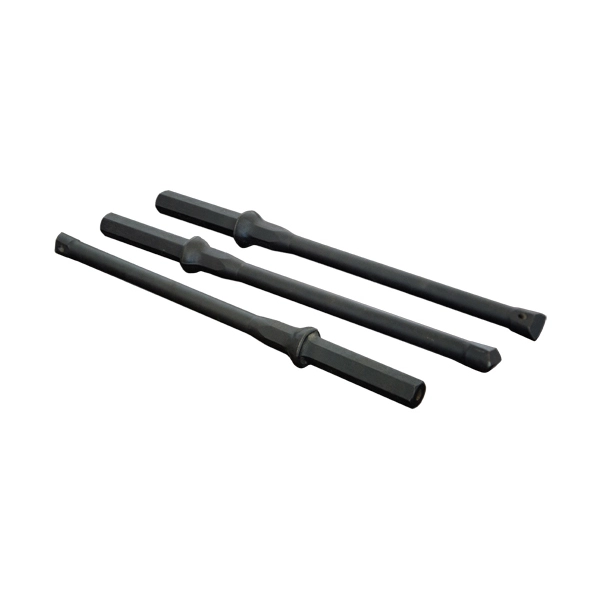Tapered Drill Rods
CLICK ENLARGE
Tapered drill equipment also provides a hexagonal chuck section to provide leverage for the rotation chuck bushing, which usually also has a forged collar to maintain the proper shank striking face position in the rock drill, and match a tapered bit at the socket end. Holes are typically drilled in 0.6 m increments to accommodate the air-leg feed length. With higher penetration, straighter holes, longer service life and lower cost per meter drilled than integral steel, tapered drill equipment is grabbing market share from integral drill steel, especially in mining applications and the dimensional stone industry.
Different rock formations and rock drills require different taper angles. When drilling with high impact hydraulic rock drills in medium-hard to hard and abrasive rock formations, a wide taper angle is normally used. Taper angles of 11° and 12° are normally used on modern drill rigs. For low impact rock drills and softer rock formations, a narrow taper angle of 7° is used. A 7° angle can also be used if bit spinning is a problem when using 11° and 12° equipment. In addition, a 4.8°(also 4°46’) angle is ideal for soft rock when you’re using pneumatic or hydraulic drill rigs - to prevent bits from spinning or becoming detached. Single rod is used to drill short holes (≤2.0m), while the rods in a series are used to drill deeper holes (up to 2.0m), to avoid bending stress excess.
Plato tapered drill rods comes with three grades, and lengths available from 600mm (2’) to 11,200mm (36’8”), (measured from the collar to the tapered end).
Taper Rods Grades Recommended Table:
| Grades | Types | Recommended conditions |
| Superior | G III, T III, | 1) Rock drills impact energy: ≥76J, typically model: YT28 2) Drilling depth: ≥ 2.5 m (8’ 2 27/64”) 3) Rock formations: very hard, hard, medium hard and soft rock Protodyakonov Hardness Scale: f ≥ 15 Uniaxial Compressive Strength: ≥150 Mpa 4) Replacements: G rod, G I rod, ROK |
| Normal | G I, ROK | 1) Rock drills impact energy: < 76 J, typically model: YT24 2) Drilling depth: ≤2.5 m (8’ 2 27/64”) 3) Rock formations: Medium hard and soft rock Protodyakonov Hardness Scale: f <15 Uniaxial Compressive Strength: <150 Mpa 4) Replacements: G rod |
| Economy | G | 1) Rock drills impact energy: < 76 J, typically model: YT24 2) Drilling depth: ≤2.5 m (8’ 2 27/64”) 3) Rock formations: Medium hard and soft rock Protodyakonov Hardness Scale: f <10 Uniaxial Compressive Strength: <100 Mpa |
Specification Overview:
| Rod Length | Taper Degree | ||
| Shank Style | mm | foot/inch | |
| Hex22 × 108mm | 500 ~ 8,000 | 1’ 8” ~ 26’ 2” | 7°, 11° and 12° |
| Hex25 × 108mm | 1500 ~ 4,000 | 4’11” ~ 13’1” | 7° |
| Hex25 ×159mm | 1830 ~ 6,100 | 6’ ~ 20” | 7° and 12° |
Notes:
1.The ordinary connection taper degree is 7°, 11° and 12°, other degrees like 4.8°, 6° and 9° are also available upon request;
2.The ordinary shank is Hex22 × 108mm, Hex25 × 159mm and other styles are also available if upon customers’ request;
3.The rod length must be specified in order;
4.In order to adapt to different rock conditions, the drill rod is selected by users.
How to order?
Shank Types + Rod Length + Taper Degree
Your email address will not be announced. The required field marking is*

